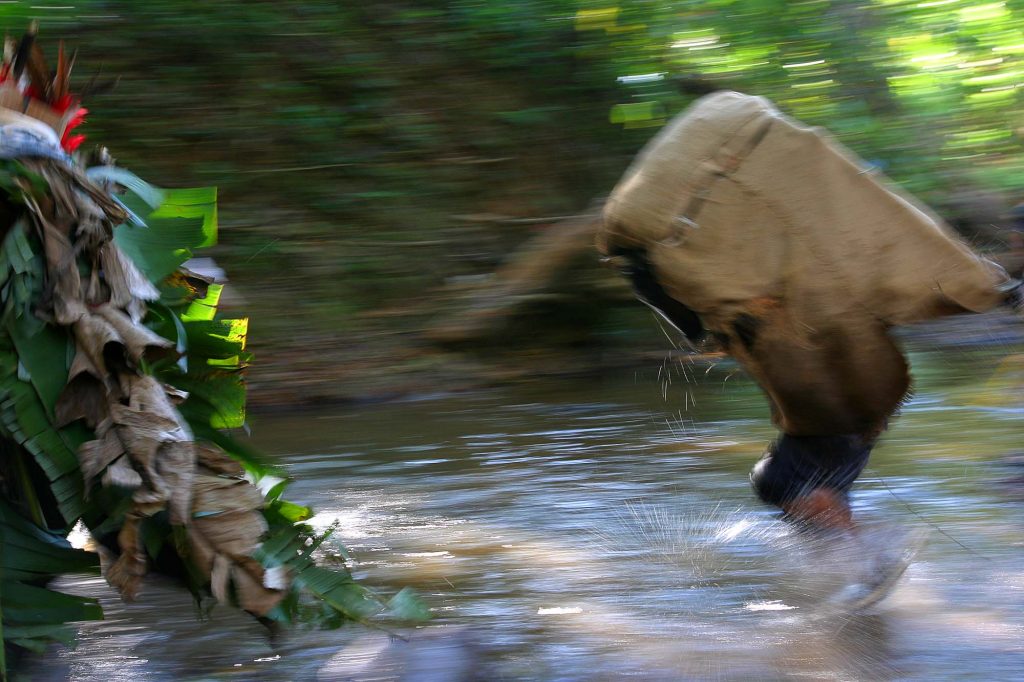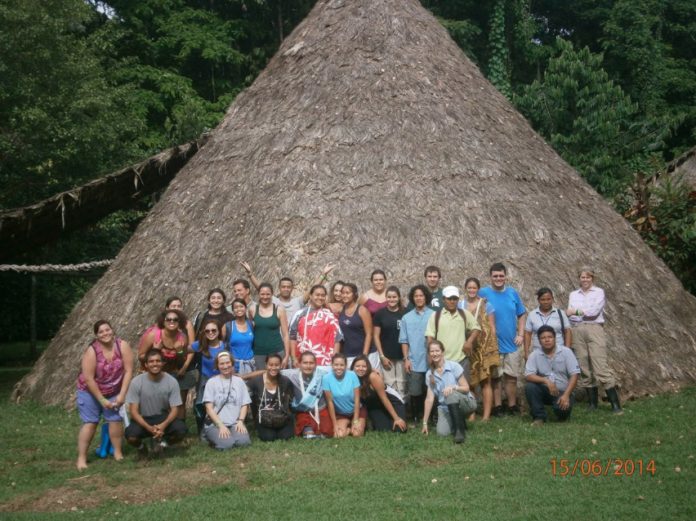The Bribri territories in Talamanca de Limón, and Boruca territories in southern Puntarenas, are arguably the Costa Rican indigenous lands with the longest-running and most active tourism operations. That experience means that they have similar stories, challenges and successes.
Those successes have stood the test of time. For example, in towns like Yorkin, in the Bribri Talamanca Indigenous Territory,in Limón, a group of Bribri women has been offering cultural experiences for more than 30 years through the Stibrawpa Association (read about their worldview in El Colectivo 506). Their work began with trips by boat along the Sixaola River and the Yorkín River.
In Boruca, thanks to the traditional festival of Los Diablitos (read about this festival in El Colectivo 506), which is celebrated in December in the town of Boruca and in February in the town of Rey Curré, communities have been offering lodging and crafts for more than 20 years.
“Boruca began doing tourism when we didn’t even know what the concept of tourism was,” says Lourdes Frasser, community leader and member of the Sô Cagrü indigenous women’s group. “But women above all, and women’s organizations, knew that we had to launch this struggle. We were confident in our identity, and we took up the flag. We hosted friends and visitors who came from far away. That has always been the motto: friends come from far away, non-indigenous brothers come to visit us, and that is more than enough reason to prepare our best meals.”
In the case of the Bribri peoples of the Caribbean region of Talamanca, the history of tourism development began with the support of hikers and researchers from the United States and other international organizations that saw tourism potential in the territories during the 1990s. Over time, this led to the development of much of the tourist offerings available today.
“People come here to see gastronomy, daily practices, spirituality, biodiversity. There are many things to sell,” says Rafael Cabraza, a Bribri tourism entrepreneur from Servicios Etnoturisticos y Educativos Aknama in the Shiroles community.
“There is a lot of promotion of tourism here,” he adds, describing how the entrepreneurial spirit has grown in his town. However, he points out one of the challenges that comes with tourism growth: the need to establish community regulations that are fair for all parties involved in providing services.
“What we have not been able to consolidate is a true chamber of tourism, or the management of these issues by the Integral Development Association (ADI)—getting it immersed in the issue, with a permanent representative within these organizations,” he says. “That’s been the hardest part.”
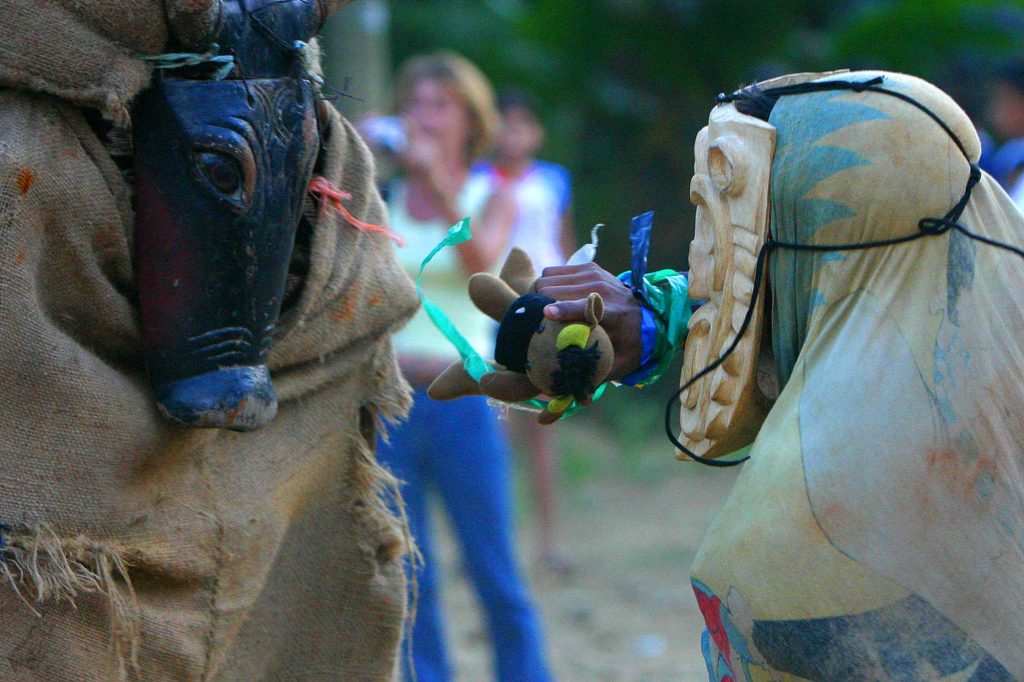
Common threats
Throughout the interviews with Lourdes and Rafael, a series of common concerns emerge, even though they live on opposite sides of the Talamanca Mountain Range.
“Any action that implies development for a community has a positive and negative side,” explains Rafael. “For me, the negative of tourism is drugs, sex tourism, and tourists that come pleading for discounts.”
“One of the ways that tourism has a negative impact on indigenous peoples, and on my people in particular, is the lack of a feasibility study or cultural support,” says Lourdes. “It means that some visitors bring drugs, including hard drugs. Our kids and young people have seen these practices in non-indigenous people who come as visitors.”
“Sex tourism, although it seems incredible and is not documented, does exist,” says Rafael. “I’ve had to deal with people who ask about [the availability of indigenous women for sex]: ‘Cholitas, where are the cholitas? Is there a cholita around who’s up for it?’. The subject is a bit complicated. It is a very sensitive issue. However, it is latent.”
“All these things, I’ve faced them as a mother. We do see negative things in tourism,” says Lourdes. “But these negative things are not so bad if we are prepared to deal with them. That’s when the population, and women, must be empowered to find solutions where they exist. But if we are not empowered and aware of what we have to face, the problem increases.
“Another very big problem is land ownership,” she adds. “Sixty percent of our territories are in the hands of non-indigenous people. The land is very important for the transmission of culture, spirituality, assets, love for the land, ancestral knowledge. When a woman does not have land she cannot transmit. I can’t teach my children what edible mushrooms are, if I don’t have the land where wild mushrooms grow, or where traditional medicine is born. I can’t pass that on to my future generations, even though I’m a matriarch with knowledge. I cannot transmit that if I do not have the base that is the earth.”
Rafael says that another external pressure on his community comes from religious organizations.
“There’s pressure on the spiritual issue from churches,” he says.“We here are like the Holy Land: we have a huge number of religions that throw our spirituality to the ground, telling us that Sibu is the same as their God, that Sibu is not called that, he is called Jehovah, he’s called this, he’s called that. This has caused an incredible loss of vtraditional values in the community.”
Although the threats are many, and tourism can be a catalyst, the Bribri and Boruca peoples have shown that they are capable of continuing to defend their culture and territory. They offer versions of tourism that are not only economically beneficial to the communities, but also give them reasons to defend and rescue their culture.
“There is an internal struggle within the communities to continue maintaining [Bribri] idiosyncrasy,” says Rafael. “Young people are learning that it must be rescued because it can have value. We can use it in a sustainable way, with the environment and the community.”
“Within the indigenous territory I see more than 95% positive things and 5% negative things.”
Talamanca Bribri and Keköldi, Limón
Talamanca Bribri and Kë́köldi are the two Bribri territories within the canton of Talamanca de Limón. Both territories are made up of more than 70,000 hectares, most of them mountainous, and have a population of approximately 12,000 inhabitants.
“We are a very rich area in terms of biodiversity. We are an essential component of the Cordillera de Talamanca, and we have a lot of water resources, mining, oxygen production and many other interesting things,” says Rafael. “We are part of the protective zone of the La Amistad International Park (PILA), with thousands of hectares that are protected at the level of primary forests, biodiversity, and moors. We’re a world heritage site of humanity because of our cultural wealth, the cultural heritage that identifies us as indigenous: our language, our beliefs, our spirituality, although very little of this actually remains.”
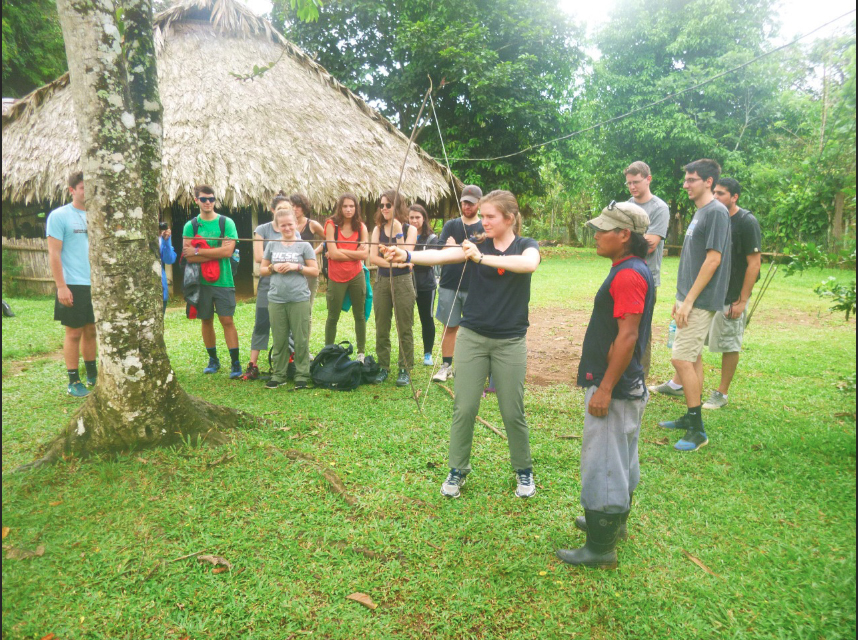
Rafael explains that the Bribri-Talamanca Indigenous Territory Comprehensive Development Association (ADITRIBRI) “is the oldest of the [indigenous associations]. It is the most powerful in terms of the number of people and its political role in defending the territory, the communities and their needs.”
Perhaps it’s because of this example that the Bribri towns of Talamanca and Keköldi offer so many tourism services and attractions. Rafael lists some of the enterprises with which he works as a logistics and reservations coordinator: Buena Esperanza, DiLä Integral Farm, Arawak Guides and Scout Group 240, La Victoria Integral Farm, Awapa Association of Kashabri, Ditsö U Hostel, Association Stibrawpa, ADITICA, Keköldi Iguanas Project, Diwak Project, Puerto Viejo Chamber of Tourism, Tsoki School, Siwa Kabata Agroecological Farm.
Having so many tourism enterprises within indigenous communities not only generates income for Bribri families, but also increases demand for prepared workers.
“Many years ago, staying in school was very difficult,” says Rafael. “[For young people today], studying and preparing gives them the opportunity to recover their roots. Why? Because they’re more informed about their language, their idiosyncrasy, the importance of their practices, the importance of knowing what each tree means, their history, what the river means, why they are sacred, why they are considered spiritual beings. Why, as in many other cultures worldwide, what white people simply consider dead, stone, has a calculable value for us: there’s a being that it represents. Those things, that level of wanting to maintain that spirituality, that bioculture is what makes us different.”
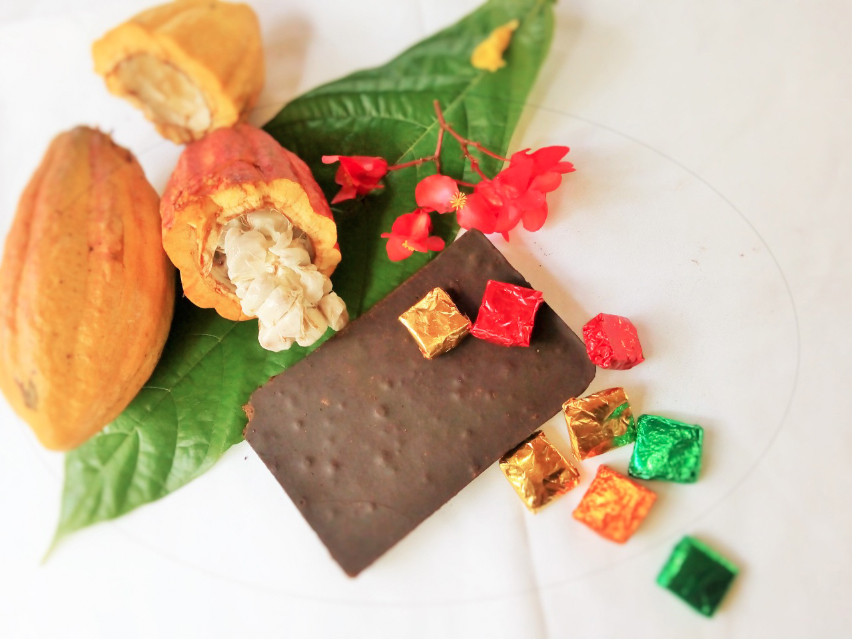
Boruca indigenous territory: Buenos Aires de Puntarenas
The Boruca indigenous groups have two adjoining territories: Boruca and Curré. Both territories comprise more than 22,000 hectares. and they have a population close to 4,500 inhabitants.
“Boruca has its own language, its own dress, its culinary art,” explains Lourdes. “We have mountains. We live from art and tourism. We also have self-sufficient agriculture. Our high-altitude landscape ranges from 600 to 1100 meters above sea level, for an intermediate cool climate. There are coffee plantations, cacao, corn, beans, yucca, and banana. There are also some non-indigenous cattle farms.
“There are so many positive things,” she adds. “Nature, knowledge, ancestral practices, love for Mother Earth. Being matrilineal or matriarchal peoples, the position or role of women in the community is very important”.

For Lourdes, support for entrepreneurship and training for women are essential in order to improve the quality of life of the Boruca population: “When a woman is developed, it’s not only her. Her neighbors, her friends, her family, her aunts and uncles, her grandparents also develop, and everything is together as a community.”
“Because of tourism, families, especially women and single mothers, can reduce hunger, poverty and violence,” says Lourdes.
Like Rafael, she can list many tourism ventures in Boruca to visit.
“The museum managed by the Boruca Flower Producers Association is very well organized” she says. “Our organization is Sô Cagrü, which has raised the standards for women and our sisterhood. Other independent families have been emerging as private enterprises such as Caminos Cuasran, and artist workshops such as Taller Turí or Taller Bruncrim.
“I am very grateful to the tourism that comes to our land. I have benefited, personally: I have raised my family. I sent them to university,” Lourdes concludes. “I have involved 11 more women in the process, and thanks to that, there is food on our tables today. There is education, there is health, there is clothing for our children, there is recreation, thanks to what tourism generates in my indigenous people of Boruca. Sô Cagrü in particular helps us believe every day that we are capable of empowering ourselves and that having an indigenous identity is a source of pride. It’s a beautiful thing.”
